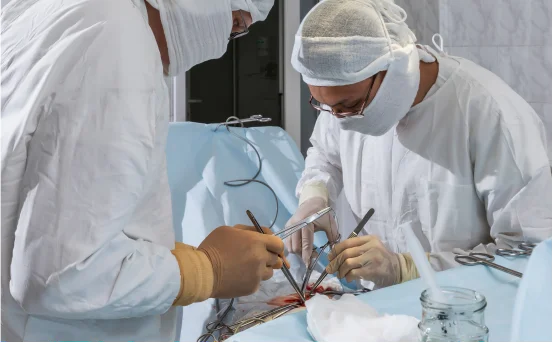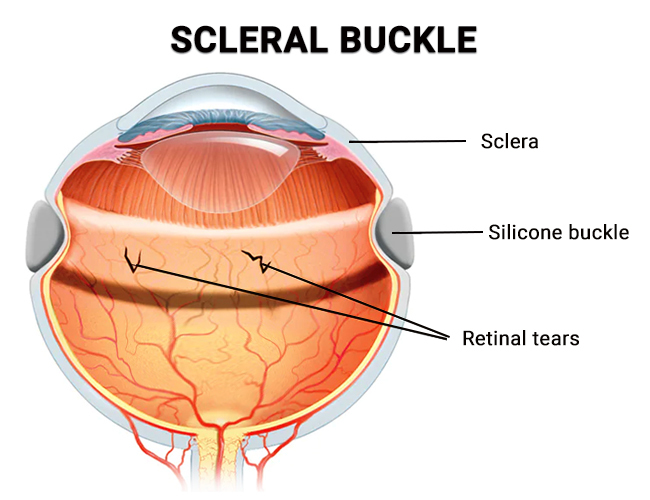A hernia happens when an internal organ or tissue pushes through a weak spot in the surrounding muscle or connective tissue. While it might start as a small bulge or mild discomfort, it can grow over time and even lead to serious health risks if not treated properly. In many cases, surgery becomes necessary to prevent further complications or relieve ongoing pain and pressure.
Hernia surgery has evolved significantly over the years. Today, there are multiple surgical options available, from traditional open surgery to advanced robotic procedures. Each technique has its own benefits, risks, and suitability depending on the patient’s condition, age, type of hernia, and overall health. In this blog, we’ll explore the main types of hernia surgeries and help you understand which option might be the right fit for you or your loved one.
Types of Hernia Surgery
-
Open Hernia Surgery
Open hernia surgery is the oldest and most widely practiced technique for hernia repair. In this approach, the surgeon makes a single, larger incision near the site of the hernia to access the protruding tissue. The bulging organ or tissue is gently pushed back into place, and the weakened muscle wall is repaired, either by stitching it together or by placing a surgical mesh to reinforce the area.
This type of surgery is commonly used for various hernias, including inguinal (groin), femoral, umbilical (belly button), and incisional hernias (those that develop at the site of a previous surgery). The benefit of open surgery is that it allows direct access to the hernia and may be preferred for larger or more complicated cases. However, it usually involves a longer recovery period, more post-operative discomfort, and a slightly higher chance of visible scarring compared to minimally invasive methods.
Despite this, open hernia surgery remains an effective and safe choice, especially when performed by an experienced surgeon. It is also often used in emergency cases or when laparoscopic methods are not suitable due to health conditions or surgical history.
-
Laparoscopic Hernia Surgery
Laparoscopic hernia repair is a minimally invasive surgical option that has gained popularity due to its faster recovery time and smaller incisions. Instead of one large cut, the surgeon makes three to four tiny incisions in the abdomen. A laparoscope (a thin, tube-like instrument with a camera) is inserted through one of the incisions, allowing the surgeon to view the hernia site on a monitor and repair it using specialized tools inserted through the other incisions.
During the procedure, the hernia is typically repaired with a synthetic mesh, similar to open surgery, to provide long-term support and reduce the risk of recurrence. Laparoscopic surgery is often recommended for patients who want a quicker return to daily activities, as it usually causes less pain and scarring, and patients can often go home the same day or the next.
It’s also an excellent option for people who have hernias on both sides (bilateral hernias) or have previously had hernia repair and are experiencing a recurrence. However, laparoscopic surgery requires general anesthesia and may not be suitable for individuals with certain medical conditions, very large hernias, or previous complex abdominal surgeries.
-
Robotic Assisted Hernia Surgery
Robotic-assisted hernia surgery is the most advanced form of minimally invasive repair available today. It is similar to laparoscopic surgery in terms of the size and location of the incisions, but the main difference is in the precision and control it offers. In this procedure, the surgeon sits at a console and controls robotic arms equipped with surgical instruments. The system allows for extremely fine, accurate movements that may be difficult to achieve with standard laparoscopic tools.
This level of precision can be particularly useful in complex or recurrent hernias, ventral hernias (which occur in the abdominal wall), or in patients with obesity or scar tissue from previous surgeries. The robotic approach may offer better outcomes in terms of lower pain levels, reduced blood loss, fewer complications, and a quicker return to daily activities.
However, robotic surgery may not be available in all hospitals or surgical centers and could be more expensive than traditional methods. It’s best to discuss this option with your surgeon to see if it’s the right choice for your specific condition.
-
Emergency Hernia Surgery
Sometimes a hernia can become an emergency, especially if it becomes strangulated or incarcerated. A strangulated hernia means that the blood supply to the trapped tissue is cut off, which can lead to tissue death and serious infection. This condition is extremely dangerous and requires immediate surgical intervention.
Emergency hernia surgery can be done using open or laparoscopic techniques, depending on the severity of the condition and the patient’s stability. The main goal in such cases is to restore blood flow, remove any damaged tissue, and repair the hernia as safely and quickly as possible.
Delaying treatment for a strangulated hernia can be life-threatening. That’s why it’s important not to ignore symptoms like sudden intense pain, vomiting, fever, or a hernia that becomes hard or discolored. These are all warning signs that immediate medical care is needed.
How to Choose the Right Type of Hernia Surgery
Choosing the right hernia surgery is not a decision to be made lightly. It depends on several factors, including the size and type of hernia, whether it is a first-time or recurrent hernia, your medical history, age, physical condition, and your lifestyle needs.
A general surgeon or a specialist in hernia repair will typically evaluate your condition and help you weigh the pros and cons of each surgical method. Some patients may be better candidates for laparoscopic or robotic surgery, while others may benefit more from a traditional open repair. The decision also depends on factors like your recovery goals, occupation, tolerance for general anesthesia, and even access to advanced surgical facilities.
The most important step is to speak openly with your doctor, ask questions, and make sure you understand the full picture including risks, recovery time, and long-term outcomes.
Conclusion
Hernia repair has come a long way, and patients today have more choices than ever before. Whether it’s through open surgery, laparoscopic methods, or cutting-edge robotic procedures, the goal remains the same: to fix the hernia safely, reduce discomfort, and prevent it from returning.
Understanding the types of hernia surgery available is the first step toward making an informed, confident decision about your health. If you or someone you love is dealing with a hernia, don’t wait early diagnosis and timely surgical treatment can lead to faster healing, fewer complications, and a smoother return to normal life.























